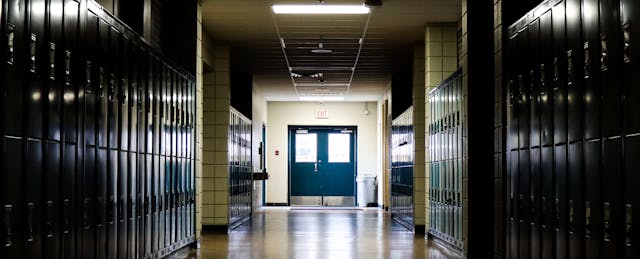When it comes to learning loss during COVID-19, the question is not whether it has happened, but how much. A new report out from NWEA, a non-profit assessment organization, offers insight into just how steep the so-called COVID slide has been so far.
The good news is that students learned a lot more doing remote learning than education groups projected they would. The bad news is students still learned notably less than they would have in a typical year.
NWEA estimated in April, a month into the pandemic, that students would enter the fall with only 70 percent of their learning gains in a typical school year in reading, and 50 percent of their typical gains in math. Stanford University’s Center for Research on Education Outcomes (CREDO) predicted a similarly bleak outcome. By translating learning loss into “lost days of learning,” CREDO projected that, in the spring, the average student would have missed out on up to 183 days in reading and up to 232 days in math.
The new research from NWEA, published today, reveals a notably better reality. Based on data from 4.4 million students in grades 3-8 who took the organization’s annual MAP Growth assessment, the group was able to get a sense—albeit a limited one, with caveats—of how students performed this fall compared to years past.
Across nearly all grades, students have made progress in both math and reading since the start of the pandemic, but by slimmer margins than is considered normal. In math, students fell between five and 10 percentage points behind their same-grade peers from last year. In reading, remarkably, the numbers stayed about the same.
This data does not capture the reality of every student in the United States. It doesn't even represent every student who took the MAP Growth assessment in fall 2019—a quarter of students were "missing" from the most recent data, meaning they did not take the fall 2020 exams. Nor does it reveal the racial, ethnic and socioeconomic disparities that exist among students. It is an average of a sample. Yet officials at NWEA and others in education say this early indication is a promising sign—and it’s a testament to all the arduous, tireless work that teachers did and continue to do throughout the pandemic.
Chris Minnich, chief executive officer of NWEA, said that the fact this research does not point to the “worst case scenario” is very likely due to the effort educators put in, and their ability to rise up to meet the unique challenges this year brought. “Teachers have done a pretty good job with the hand they’ve been dealt,” he said during a virtual event with reporters, hosted by the Education Writers Association.
Aaliyah Samuel, executive vice president of government affairs and partnerships at NWEA, said in an interview that this data “shows the energy educators put into quickly shifting their instructional model. They tried to deploy every resource possible,” including mailing home paper packets, getting up to speed on virtual learning, recording themselves reading stories or explaining concepts on YouTube and doing drive-bys to let students see their faces.
These results also “speak volumes,” Samuel added, “to the support parents have tried to give,” even as they’ve juggled their own jobs with remote learning.
The discrepancy between math and reading outcomes was not unexpected. Parents and caregivers are often better able to support their children in reading—whether by suggesting new books to read together, starting a bedtime story tradition or something similar—than in math, where many adults have long forgotten not only what the rules and concepts are but how to explain them, Minnich said.
However, because math is learned sequentially—a student must understand one concept to be able to learn the next—it will create an “acute challenge” for schools when students resume in-person learning, he added.
Ector County Independent School District, in Odessa, Texas, is among the districts that participated in the assessment. Its 34,000 students performed within or close to the range of the national average, but in math, fourth-grade students declined by 11 percentage points and eighth-graders by 13 percent.
Scott Muri, superintendent of Ector County ISD, said the NWEA results did not contain surprises—he was prepared for this outcome—but it did give his staff insight that they can learn from and incorporate into every grade, classroom and with each individual student.
“We learned the COVID slide is real,” Muri told EdSurge. “We had anticipated it from predictive analytics from the summer, looking at what was happening and not happening with our students. ... We’re aware COVID had a significant impact on learning within our system and in our students. We saw our most fragile students were the ones impacted most: students in poverty, special education students, homeless students. They suffered the greatest loss, at every grade level.”
Despite the declines among students, Muri is making “lemonade out of the lemons” that schools and families were given this year. He doesn’t dwell on the learning loss from remote instruction—that was out of his and his staff’s control—but rather focuses on the good that has come from this experience: Every one of Ector County’s students now has a device to enable virtual learning, his teachers have adapted to technology and grown because of it, and everyone has been challenged to think about where education is broken and how it can be rebuilt to better support and serve all students.
“We can lament all day about COVID-19 and the damage it has done,” Muri said. “But when we do that, we fail miserably. We don’t think about all the opportunities.”


